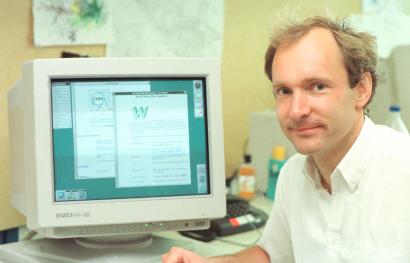It is very exciting to be in television in 2022, as the industry seems to have discovered ‘digital’ – again. Every pronouncement from senior management in the PSBs seems to talk about emphasising their ‘digital’ strategy or ‘shifting the focus onto ‘digital’. The problem we have at Decipher is that, whenever we read these pronouncements, we literally have no idea what they are talking about.
It is worth remembering at this point that the PSBs began launching their ‘digital’ channels in 1998. So the shift towards ‘digital’ is twenty years old. The PSBs launched their catch-up apps in 2006, so the shift towards on-demand is also almost twenty years old. Just how many times must the TV industry go through a ‘shift towards digital’ before they actually get there eludes us.
Part of the problem is that, during this time, senior management haven’t made the shift towards ‘digital’ in their own language or behaviour. They have laboured under the assumption that if they threw money at a group of kids to launch an app, they could get on with their own TV careers without having to think about ‘digital’. This means that have failed to invest in innovation in the core product – broadcast channels – while never clearly being able to define their role in a new mixed economy.
The debate isn’t between ‘television’ and ‘digital’
In fact using a single word ‘digital’ to describe a group of different tech solutions and consumer propositions just indicates a lack of understanding about the options and challenges they face. What is worse is that, after a couple of decades of failing to do this, the prescription of ‘more digital’ we are now hearing makes no sense? What is particularly alarming is that the PSBs seem to be out to damage their core assets – linear channels – in this latest attempt to define a digital strategy.
The key issue facing the PSBs is understanding the shift from an all broadcast world to a mixed viewing economy. But in this shift ‘linear channels’ are a key asset not a legacy problem, because they are the asset that most new entrants don’t have. The ability to build a large an audience, together in one moment in time, dramatically increases the power of a show and is still highly valued by advertisers. This is one function that the new tech-based service providers have been unable to compete with. In response these companies are moving towards including this kind of content in their offer – witness Amazon buying sports rights and Netflix launching a linear, scheduled offering in France (having negotiated EPG slots in various platforms including Virgin). While this has been happening the PSBs have been shifting brand focus from channel brands to their player brands and now (with the BBC’s recent announcement) they are removing Channel Controllers from management teams. To de-power your key asset in a fight against global giants is to tie one arm before your back in a fight.
This is not to say that linear channels don’t need to adapt and that there won’t be fall-out. But the amount of linear innovation has been minimal (see our thoughts on what should have happened with BBC3 here). Innovations could/should have included better links between linear and catch up within the broadcast stream and EPG, 2nd generation interactivity (like the BBC’s green button trial) and a raft of content innovation designed to drive audiences to live.
The PSBs have also seemed reticent to allow the platforms to innovate around linear on their behalf – even though many of these innovations are better done at platform level. This attitude is wrong but understandable when dealing with Sky and Virgin. But it is just plain wrong when dealing with the platforms that PSBs actually own like Freeview/Freesat and Youview (see thoughts on what the PSBs could achieve through Freeview here). This has actually weakened the PSB-owned platforms in their own battle against Amazon and Google.
‘On-demand’ is not a single concept
One of the challenges for the PSB management is to understand the difference in the role of catch-up TV and stand alone or archive on-demand in the TV consumption mix. They are not the same and should be used differently. There seems to be particular confusion between the role of AVOD and SVOD content and brands.
Not only is this more nuanced strategy not appearing, but there is a worrying trend in the PSBs recent actions to actually disconnect linear and catch-up. Ostensibly this is to allow their ‘digital’ offering the space to thrive. However this strategy assumes no linkage between the linear and catch-up, even though the most thoughtful research has shown that the relationship between linear and catch-up is symbiotic and can be built on to retain audiences. To do this broadcasters have to ensure that their linear and catch-up propositions remain close (both technically and commercially). Separating them will ensure they both fail.
On the pay platforms – Sky and Virgin – linear and catch-up have been functionally close since launch because they were both delivered within the platform’s own software. There is a worrying trend for the PSBs to be dismantling this linkage. On SkyQ, BBC catch-up content has been delivered via Sky’s on-demand software since 2009. The amount of innovation that links the two formats using Sky’s software has been limited. However, the BBC have just launched the iPlayer web app onto the platform and it appears that their catch-up content may be pulled from the platform software, further separating the two content types and silo-ing them in different parts of the EPG.
Conclusions?
What is odd about this debate is that a shift away from linear is not supported by the numbers – at least not a sensible interpretation of them. After 15 years of the on-demand revolution, the majority of PSB viewing (by people and by hours) is still delivered by their linear channels. There is a rarely-mentioned stat which shows that viewing of shows recorded off broadcast (via PVRs) is around double that delivered by the PSB apps.
The mistake many people make is to compare the performance of broadcast apps on their own to Netflix and Prime. The comparison should always be between a PSB (linear, recorded & catch up) and Netflix. The difficult truth is that, if you put linear at the core of the analysis, the PSBs are actually doing well in the face of massive competition from new devices, content players and functionality.
Imagine what broadcast channels could do with some innovation and focus.







